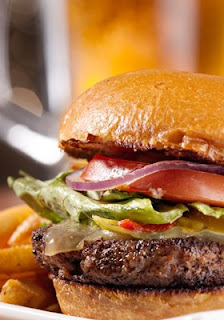Social couponing and the Sundance Kid
In my favorite film, Butch Cassidy and the Sundance Kid, there's a scene where the heroes step off a train at a rural town in Bolivia. Sundance takes a few steps into the plaza, and promptly steps into cow dung -- while Butch extols how much more they can buy with their stolen dollars and pesos.
Sundance surveys the run-down plaza, looks at Butch, and says: "What could they have here that you'd possibly want to buy?"
The scene comes to mind (minus the cow dung) every time I get an email from AmazonLocal, Groupon, or LivingSocial. Each of these online deal aggregators uses the power of social networking and deal-making with retailers to offer half-price deals to members. Call it social couponing.
Ninety percent of these deals are things I would never, ever buy. Even after I've customized my Groupon settings. I've purchased one or two of these offers. The majority, however, are for goods or services I don't find valuable.
One example: each of these sites invariably offers a half-price deal on bar food (burgers, wings) and beverages (beer, soda).
That's fine, if you dine at taverns. But most bar food is overpriced and hastily prepared. So the $20 coupon you bought for $40 of retail value really buys about $10 worth of food -- a meal you could prepare better and less expensively yourself, without leaving a tip.
Coupons don't build your reputation or brand. They rarely build relationships. Coupons, whether printed or e-tailed, do one thing: they entice you to try out a merchant you might not ordinarily visit yourself.
To paraphrase Sundance: do social couponing sites sell anything you'd really want to buy?
Also: merchants don't like them. One merchant asked me simply to skip Groupon next time, and call him directly. He'd give me the Groupon discount in person, thus saving himself the percentage he pays to Groupon to post his offers. He wants a relationship with me, the consumer -- not with Groupon.
Social networking (which is how Groupon-like sites wish to be viewed) should work to build relationships. Paying half-price for over-valued items isn't the way to grow your brand, or create value with first-time customers.
Sundance surveys the run-down plaza, looks at Butch, and says: "What could they have here that you'd possibly want to buy?"
The scene comes to mind (minus the cow dung) every time I get an email from AmazonLocal, Groupon, or LivingSocial. Each of these online deal aggregators uses the power of social networking and deal-making with retailers to offer half-price deals to members. Call it social couponing.
Ninety percent of these deals are things I would never, ever buy. Even after I've customized my Groupon settings. I've purchased one or two of these offers. The majority, however, are for goods or services I don't find valuable.
 |
| Is this a $20 burger? |
That's fine, if you dine at taverns. But most bar food is overpriced and hastily prepared. So the $20 coupon you bought for $40 of retail value really buys about $10 worth of food -- a meal you could prepare better and less expensively yourself, without leaving a tip.
Coupons don't build your reputation or brand. They rarely build relationships. Coupons, whether printed or e-tailed, do one thing: they entice you to try out a merchant you might not ordinarily visit yourself.
To paraphrase Sundance: do social couponing sites sell anything you'd really want to buy?
Also: merchants don't like them. One merchant asked me simply to skip Groupon next time, and call him directly. He'd give me the Groupon discount in person, thus saving himself the percentage he pays to Groupon to post his offers. He wants a relationship with me, the consumer -- not with Groupon.
Social networking (which is how Groupon-like sites wish to be viewed) should work to build relationships. Paying half-price for over-valued items isn't the way to grow your brand, or create value with first-time customers.